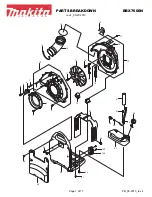
8
Quick Tester Model 8505
2.2 Testing Transformers and Capacitors
WARNING
Before performing a test on a capacitor or transformer, ensure it is
fully de-energized. Testing an energized transformer or capacitor is a
potential shock hazard to the user and may damage the Model 8505.
When using the Model 8505 to check the secondary side of
transformers, note that high voltage may be present on the primary
side. Be sure to avoid any contact with primary-side connections
that have not been fully de-energized.
The Model 8505 is designed for testing the integrity of transformers and
capacitors used in the power industry.
With the Model 8505, you can test:
●
Transformers that have newly arrived at your facility. During
transport, vibration and shock can result in the transformer coils
to short, open, or disconnect from the terminals. Although it’s
possible for a transformer turn ratio meter to test for integrity,
this type of instrument requires more time and labor to set up,
connect to the transformer, and perform the test. The Model 8505
can perform a very quick and simple integrity test, enabling you
to test multiple transformers in a short amount of time.
●
A transformer transported back to the repair facility. You can use
the Model 8505 to ensure that the basic continuity of all the coils
is intact before performing more detailed tests.
●
Capacitor terminals or plates that may be damaged. The Model
8505 can quickly determine whether or not a capacitor is still
functioning to determine whether more detailed tests and repairs
are necessary.
Note that if a transformer coil is partially damaged – for instance, some
internal turns have shorted but there is continuity as a coil – or if a
capacitor is partially damaged but is still functioning as a capacitor, the
Model 8505 will not detect an error. (A turn-ratio meter or a winding
resistance meter would be a more effective instrument for detecting this
condition.)


































